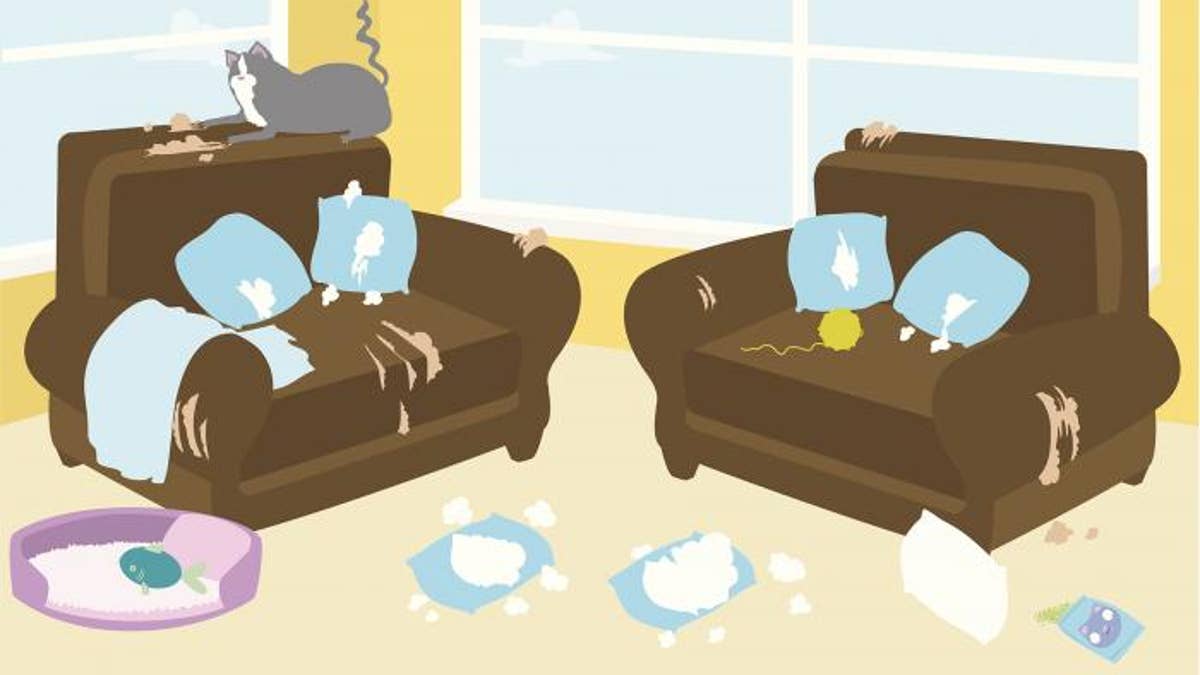
Sure we love our pets — but it's never fun when Fluffy or Fido decides to scratch, tear up, rip or otherwise destroy one of our belongings.
If your pet is showing signs of destructive behavior, they are mostly like suffering from boredom, says dog trainer Jolanta Benal. "It's usually because they've got pent up energy and they don't know what to do with it."
It's important to realize that a pet's destructive behavior is never "spiteful," says Victoria Wells, senior manager of behavior and training at the ASPCA. Instead, the behavior is "anxiety-based," which can stem from the aforementioned boredom.
Making sure your pet is getting enough exercise is key to helping them avoid a major destructive spree. Benal says a dog who is relaxed from a long, sniffy, fascinating walk, or a good hard game of fetch, will be less likely tear apart your furniture.
"Even ten minutes a day of reward-based training can make a big difference," she adds. "It doesn't matter whether you teach tricks or good manners, as long as the training is fun. Food dispensing toys are also a huge boredom preventer."
Aside from making sure your pet gets enough exercise, there are other things you can do to train and prevent them from tearing down the drapes or claw at throw pillows:
- Catch them in the act. "The only way to train a pet that they're doing something inappropriate is to catch them in the act," says Wells. "If you come home to find the sofa destroyed, and the dog is already asleep, the dog can't make a connection between your anger and the sofa being destroyed." But if you do walk in mid-chew, the correct response is to interrupt the action, either by clapping at them or raising your voice. (Don't get too angry at your pet, because it might make them scared of you.) Next, give them something appropriate to chew on and then praise them when they're chewing on the appropriate toy."
- Confine them. When it's not possible to keep an eye on a destructive pet, Wells suggests confining them to a crate or to a small, safe area behind a baby gate. "Provide them with a few interactive toys.
- Give them their own bed. If you don't want your pet on the furniture, Benal suggests giving them a bed (or two) of their own, that's just as comfy. "Many dogs love to rest their heads on a bolster. An older dog may really appreciate a gel or memory foam bed." For active cats, Wells says designate areas that are just for them that provide vertical hiding areas such as cat trees, condos, and cubbies.
- Hide it. To prevent valuable things from getting ruined, Wells advises lifting everything up to where your pet can get to it. "It's safe to assume that anything that is pet level, it's going to get chewed on.
"Until your pet gets into a good, strong habit of focusing on chew toys, put your shoes away!" adds Benal.
